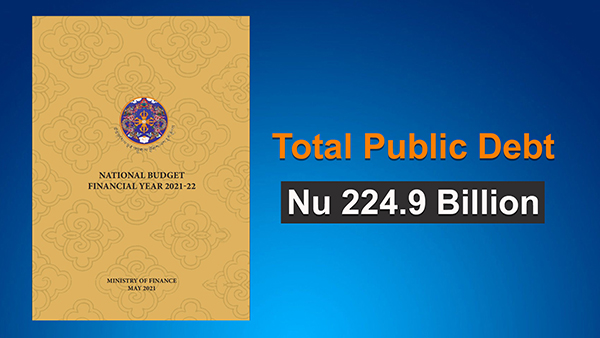 The country’s external debt is projected to reach more than Nu 225bn by the end of June 2021, an increase of 5.8 per cent from last year. This is according to the National Budget Financial Year 2021-2022. In June last year, Bhutan’s external debt stood at more than Nu 213bn. Consequently, the debt to Gross Domestic Product (GDP) ratio is 120.9 per cent.
The country’s external debt is projected to reach more than Nu 225bn by the end of June 2021, an increase of 5.8 per cent from last year. This is according to the National Budget Financial Year 2021-2022. In June last year, Bhutan’s external debt stood at more than Nu 213bn. Consequently, the debt to Gross Domestic Product (GDP) ratio is 120.9 per cent.
The debt to GDP ratio is the ratio of a country’s public debt to its GDP. By comparing what a country owes with what it produces, the debt-to-GDP ratio indicates its ability to pay back its debts. Often expressed as a percentage, this ratio can also be interpreted as the number of years needed to pay back debt if GDP is dedicated entirely to debt repayment.
The growth according to the report is due to hydro loan disbursement of Nu 9.8bn and budgetary loan disbursement of Nu 6.4bn from the Asian Development Bank and World bank in this financial year.
As of March this year, the external debt constituted 96 per cent of the total public debt. The external debt comprises borrowing for hydropower development and concessional credit for infrastructure development.
The hydropower debt of Nu 160bn accounts for 74.2 per cent of the total external debt.
“Hydropower debts are self-liquidating in nature. We have a return on investment from hydropower debt stocks. And in the case of non-hydro debt, the government is kept accountable by public debt policy. The government cannot exceed non-hydro power debt beyond 35 per cent of the GDP. Non-hydro related debt is at 26%,” said Finance Minister, Namgay Tshering.
The external debt to GDP is projected to further rise to 125.9 per cent in the Financial Year 2022-23. The projected loan disbursement for Kholongchhu and PHPA-I are expected to contribute towards the increase.
However, the external debt to GDP ratio is expected to fall to 113 per cent in Financial Year 2023-24 with the commencement of repayment for PHPA-II. The first revised cost estimate for PHPA II in 2015 was approved at almost Nu 73bn, of which 70 per cent is on loan.
Local economists said if the debt to GDP keeps increasing, the country will not be able to pay debts on time. This is going to impact the country in getting external borrowings in the future. They said, in order to lower the debt to GDP ratio, the country can mobilize domestic resources by broadening the tax base to increase the government’s revenue. The government can also rationalize expenditure and reduce debt amount in the future.
Sangay Chezom












